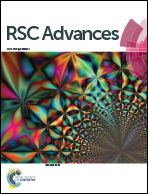Application of Ni:ZnS nanoparticles loaded on magnetic multi-walled carbon nanotubes as a sorbent for dispersive micro-solid phase extraction of phenobarbital and phenytoin prior to HPLC analysis: experimental design
Abstract
In this study, an efficient magnetic sorbent was prepared for dispersive micro-solid phase extraction (DMSPE) by incorporation of Ni:ZnS nanoparticles in magnetic multi-walled carbon nanotubes (Ni:ZnS-MMWCNTs). This sorbent was used for the extraction of phenobarbital (PHB) and phenytoin (PHN) prior to their determination by high performance liquid chromatography (HPLC) equipped with an ultra violet detector. In order to obtain the best extraction performance of PHB and PHN, the factors affecting the extraction efficiency of DMSPE including pH of the sample solution, amount of adsorbent, vortex time, desorption volume, ultrasonic time, ultrasonic temperature as well as ionic strength were investigated. The main factors were found using the Plackett–Burman (P–B) method and were optimized via central composite design (CCD). Under the optimum experimental conditions, the calibration graphs were found to be linear over the concentration ranges of 2–400 μg L−1 and 3–500 μg L−1 with the limit of detection (LOD) and limit of quantification (LOQ) of 0.5 and 1.8 μg L−1 for PHB and 0.8 and 2.8 μg L−1 for PHN, respectively. The good relative standard deviations (RSDs, at a level of 10 μg L−1, n = 6) of 3.7 and 4.5% were achieved for PHB and PHN, respectively and the preconcentration factor for the proposed method was found to be 200. Ultimately, the developed method was successfully applied to the determination of PHB and PHN in plasma, urine and water samples.


 Please wait while we load your content...
Please wait while we load your content...